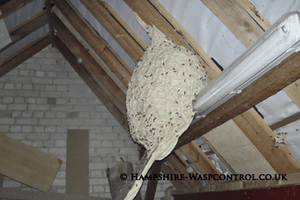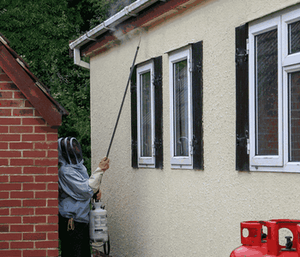Questions answered about wasps - Page:22
Why do I have slow and sleepy wasps indoors?
If you have wasps getting inside your home and they are slow and unable to fly, they are starving.
It takes a great deal of energy to fly and a good food source to provide that energy.
You usually will have lethargic wasps getting indoors in late autumn and possibly spring/early summer. You had a nest that went unnoticed and is now dying due to diminishing food supplies for the wasps.
If you can find where they are getting in, use packing tape to block the entry point to prevent them from gaining access to the inside of your home. Hoover up the remaining wasps, and this should stop the problem.
If you are finding large wasps indoors and it is springtime/early summer, this will be queens waking from hibernation (probably in your loft space) and finding their way inside (by mistake) rather than going outside.
Are wasps a danger to pets?
Wasps are highly defensive of their nests and can attack anything approaching the nest location.
Dogs are at risk from individual stings due to their nature to chase things, and many dogs instinctively try to bite insects and can get stung in their mouths which can be particularly dangerous.
Horses are also at risk, as wasps like to nest in stables. Horses can also be at risk if there are nearby honeybee hives, and there have been several cases of horses dying from continued attacks from honeybees.
How big do wasp nests get?
The size of wasp nests depends on the season. In some years, nests get larger than usual.
In an average year, at the end of the summer, when the nests are full size, they can be three feet in diameter.
Not all nests are round, and wasps can build their nests in any shape to fit in with the surroundings.
A massive nest can grow to four or five feet in diameter, but this size is quite rare.

I can see wasps going in from outside but I cannot see a nest in the loft?
If you can see wasps entering from outside, a nest is probably present.
Not all nests are visible and can be tucked away in cavity walls or some other void that cannot be seen.
If you can see the wasps entering, we can treat the nest. A large proportion of nests are treated from the outside.

Should I seal off wasp nest entrance if no wasps seen for several days
If you have had a wasp nest treated and no wasps have been seen for a few days, you can seal the entrance with confidence that all of the wasps are dead. We do not advise sealing an entrance before a nest has been treated.
